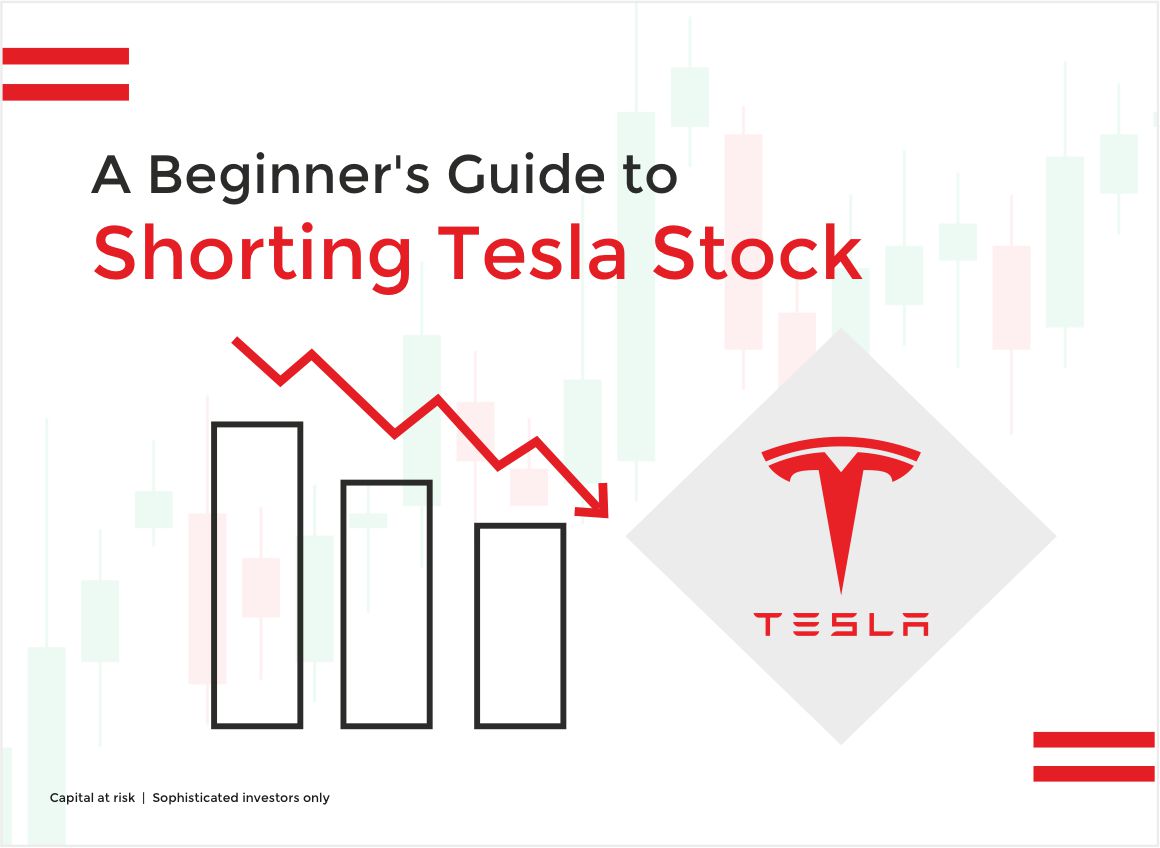A Beginner's Guide to Shorting Tesla Stock
Posted:
Tesla is a company that has disrupted the traditional automotive industry by introducing innovative electric vehicles that have redefined the way we think about cars. It is headquartered in Palo Alto, California, and is currently led by Elon Musk.
If you're a beginner investor looking to short Tesla stock, there are some key things you need to know before getting started. Shorting a stock is essentially a bet that the stock's price will fall. If you're right, you can make money. But if the market doesn’t go as planned, it can be a risk you will have to bear. Here's what you need to know to get started.
What is shorting a stock?
When you buy a stock, you're betting that the price of that stock will go up. When you short a stock, you're betting that the price of that stock will go down. To short a stock, you borrow shares from someone else and sell them on the open market. You're essentially betting that you can buy those shares back at a lower price, return them to the person you borrowed them from, and keep the difference as profit.
How do you short a stock?
To short a stock, you need to work with a broker who has access to the stock you want to short. Not all brokers offer this service, so make sure you check with your broker before you get started.
When you short a stock, you're essentially borrowing shares from someone else which acts as leverage and selling them on the open market. There are interest and other charges that depend on brokerages. The interest rate will vary depending on the broker you're working with and the stock you're shorting.
What are the risks of shorting a stock?
Shorting a stock can be risky because there's no limit to how high a stock's price can go. When you buy a stock, the most you can lose is the amount you invested. But when you short a stock, your potential losses are unlimited. If the price of the stock you shorted goes up instead of down, you'll need to buy back the shares at a higher price than you sold them for. This could result in a significant loss. Shorting a stock can also be risky because you're essentially borrowing money to make the investment.
Most common ways that investors can short-sell Tesla stock:
- Short Selling Shares: One way to short Tesla shares is to borrow shares of the company from a broker and sell them in the market, hoping to buy them back later at a lower price. This is the most direct way to short-sell Tesla, but it requires a margin account and carries a higher degree of risk.
- Buying Put Options: Another way to short Tesla is to purchase put options, which are financial contracts that give the holder the right, but not the obligation, to sell the stock at a predetermined price (strike price) within a certain time period. Investors can take a short position in Tesla stock through options trading. If the price of Tesla stock falls below the strike price, the holder can exercise the option and sell the stock for a profit. One way to invest through options is by analyzing the short interest in options for a particular stock, it can provide valuable insight into market sentiment and the potential for price volatility.
- Contracts for Difference (CFDs): They are financial derivatives that allow traders to speculate on the price movements of an underlying asset without actually owning it. CFDs can be traded on a variety of financial assets, including stocks, commodities, currencies, and indices. However, trading CFDs also comes with certain risks, including fees and leverage, which amplifies both potential profits and losses.
- Shorting ETPs: Tesla short sellers can also short-sell exchange-traded products (ETPs) that hold Tesla stock. For example, the Graniteshares 3x Short Tesla ETP (STS) seeks to provide thrice the inverse daily return of the Tesla stock.
Leveraged Tesla ETP as an option to short Tesla?
Investors may choose to invest in Exchange-Traded Products (ETPs) for several reasons, including:
- Diversification: ETPs provide investors with exposure to a diversified portfolio of securities, which can help to reduce risk by spreading investments across different sectors, regions, and asset classes.
- Convenience: ETPs are listed on exchanges and can be bought and sold like stocks throughout the trading day, providing investors with a convenient and flexible way to access a broad range of markets and assets.
- Transparency: ETPs are required to disclose their holdings on a daily basis, providing investors with transparency and insight into the underlying assets and investment strategy.
- Tax Efficiency: ETPs are generally more tax-efficient than mutual funds, as they typically have lower capital gains distributions due to their unique structure and the ability to create and redeem shares in-kind.
Conclusion
Shorting a stock like Tesla (TSLA Shares) can be a risky bet, but it can also be a profitable one if you're right. Before getting started, make sure you understand the risks and do your research. Consider using options instead of shorting the stock directly, and be prepared to act quickly in response to sudden price movements. Remember, shorting a stock is not for everyone, and you should only do it if you're comfortable with the potential risks and losses.
Short Tesla ETPs by GraniteShares
Short Tesla ETPs by GraniteShares
| Product name | Ticker | ||
|---|---|---|---|
| USD | EUR | GBX | |
| 3STS | 3STE | 3STP | |
| 3LTS | 3LTE | 3LTP | |
| 3SFT | 3S3E | 3S3P | |
| 3FTG | 3FTE | 3FTP | |
| FTNG | FTNE | FTNP | |
| SFTG | SFTE | SFTP | |
DISCLAIMER
This is a disclaimer stating that all trading and investing comes with risks. Always do your research and do not invest more than you can afford to spend.
GraniteShares accepts no responsibility for any loss or damage resulting directly or indirectly from the use of this blog or the contents. GraniteShares Limited (“GraniteShares”) (FRN: 798443) is an appointed representative of Messels Limited which is authorised and regulated by the Financial Conduct Authority.
This blog does not constitute an offer to buy or sell or a solicitation of an offer to buy securities in any company. Nothing contained herein constitutes investment, legal, tax or other advice nor is to be relied upon in making an investment or other decision. No recommendation is made positive or otherwise, regarding individual securities or investments mentioned herein. Any summary list of risk factors does not purport to be a complete enumeration or explanation of the risks involved in a particular investment. Prospective clients must consult with their own legal, tax and financial advisers before deciding to invest. This email contains the opinions of the author and such opinions are subject to change without notice. The source of data is GraniteShares unless otherwise stated. No guarantee is made to the accuracy of the information provided which has been obtained from sources believed to be reliable. This email and the information contained herein is intended only for the use of persons (or entities they represent) to whom it has been provided. Past performance is not a reliable indicator of future results. The value of an investment may go down as well as up and can result in losses, up to and including a total loss of the amount initially invested. Investments may involve numerous risks including, among others, company risks, general market risks, credit risks, foreign exchange risks, interest rate risks, geopolitical risks and liquidity risks. Please note that GraniteShares short and leveraged Exchange Traded Products are for sophisticated investors.



